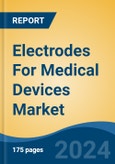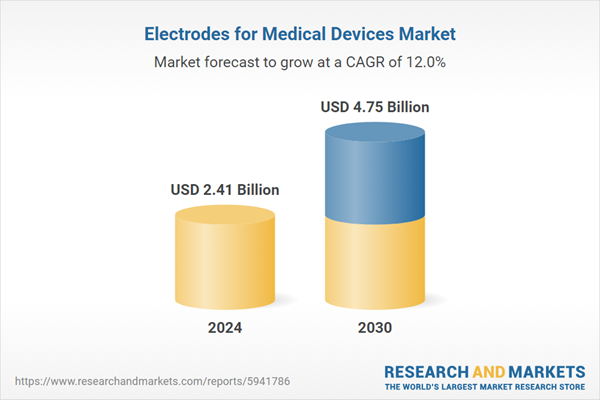Therapeutics is the fastest growing segment, North America is the largest regional market
Speak directly to the analyst to clarify any post sales queries you may have.
10% Free customizationThis report comes with 10% free customization, enabling you to add data that meets your specific business needs.
Key Market Drivers
The global market for electrodes for medical devices is significantly influenced by the rising prevalence of chronic diseases. The increasing incidence of conditions such as cardiovascular disorders, neurological diseases, and diabetes necessitates continuous, and often long-term, monitoring and diagnostic interventions. These conditions demand consistent physiological signal acquisition for effective patient management. For instance, according to the World Health Organization (WHO), in March 2024, a major new study published in The Lancet Neurology revealed over 3 billion people worldwide were living with a neurological condition in 2021, underscoring a substantial and persistent need for diagnostic tools like electroencephalography electrodes. This escalating burden of chronic illnesses places sustained pressure on healthcare systems, amplifying the requirement for reliable and accurate electrode solutions.Key Market Challenges
The stringent regulatory requirements and ongoing concerns regarding the biocompatibility and patient comfort of electrode materials represent a significant impediment to the growth of the Global Electrodes For Medical Devices Market. Navigating complex compliance landscapes translates into substantial financial burdens and prolonged market entry timelines for manufacturers. For example, according to MedTech Europe's 2024 Regulatory Survey, manufacturers anticipate a 50% increase in maintenance and re-certification costs for medical devices over a five-year cycle under current regulations. This elevated cost directly impacts resource allocation, potentially diverting funds from research and development into compliance activities.Key Market Trends
The shift towards wearable and home-based monitoring reflects a significant transformation in patient care, moving diagnostics and continuous data collection from clinical settings to daily life. This trend emphasizes convenience, proactive health management, and reduced healthcare costs by enabling individuals to monitor vital signs and other physiological data remotely. According to the American Medical Association, a January 2024 report indicated that nearly 75% of physicians had implemented telehealth programs in their practices, representing a substantial increase compared to 2018. This widespread adoption necessitates advanced electrodes designed for prolonged wear, comfort, and accurate signal acquisition outside traditional hospital environments.Key Market Players Profiled:
- 3M Company
- Boston Scientific Corp
- GE Healthcare Inc
- Medtronic PLC
- Natus Medical Inc
- Thermo Fisher Scientific Inc
- Koninklijke Philips NV
- Kindbody
Report Scope:
In this report, the Global Electrodes For Medical Devices Market has been segmented into the following categories:By Type:
- Diagnostics
- Therapeutics
By End User:
- Hospitals & Clinics
- Ambulatory Care Centers
- Others
By Region:
- North America
- Europe
- Asia-Pacific
- South America
- Middle East & Africa
Competitive Landscape
Company Profiles: Detailed analysis of the major companies present in the Global Electrodes For Medical Devices Market.Available Customizations:
With the given market data, the publisher offers customizations according to a company's specific needs. The following customization options are available for the report.Company Information
- Detailed analysis and profiling of additional market players (up to five).
This product will be delivered within 1-3 business days.
Table of Contents
Companies Mentioned
The companies profiled in this Electrodes for Medical Devices market report include:- 3M Company
- Boston Scientific Corp
- GE Healthcare Inc
- Medtronic PLC
- Natus Medical Inc
- Thermo Fisher Scientific Inc
- Koninklijke Philips NV
- Kindbody
Table Information
| Report Attribute | Details |
|---|---|
| No. of Pages | 185 |
| Published | November 2025 |
| Forecast Period | 2024 - 2030 |
| Estimated Market Value ( USD | $ 2.41 Billion |
| Forecasted Market Value ( USD | $ 4.75 Billion |
| Compound Annual Growth Rate | 11.9% |
| Regions Covered | Global |
| No. of Companies Mentioned | 9 |









